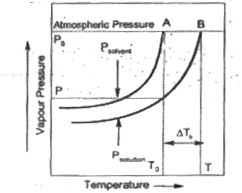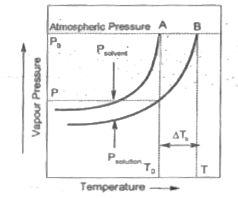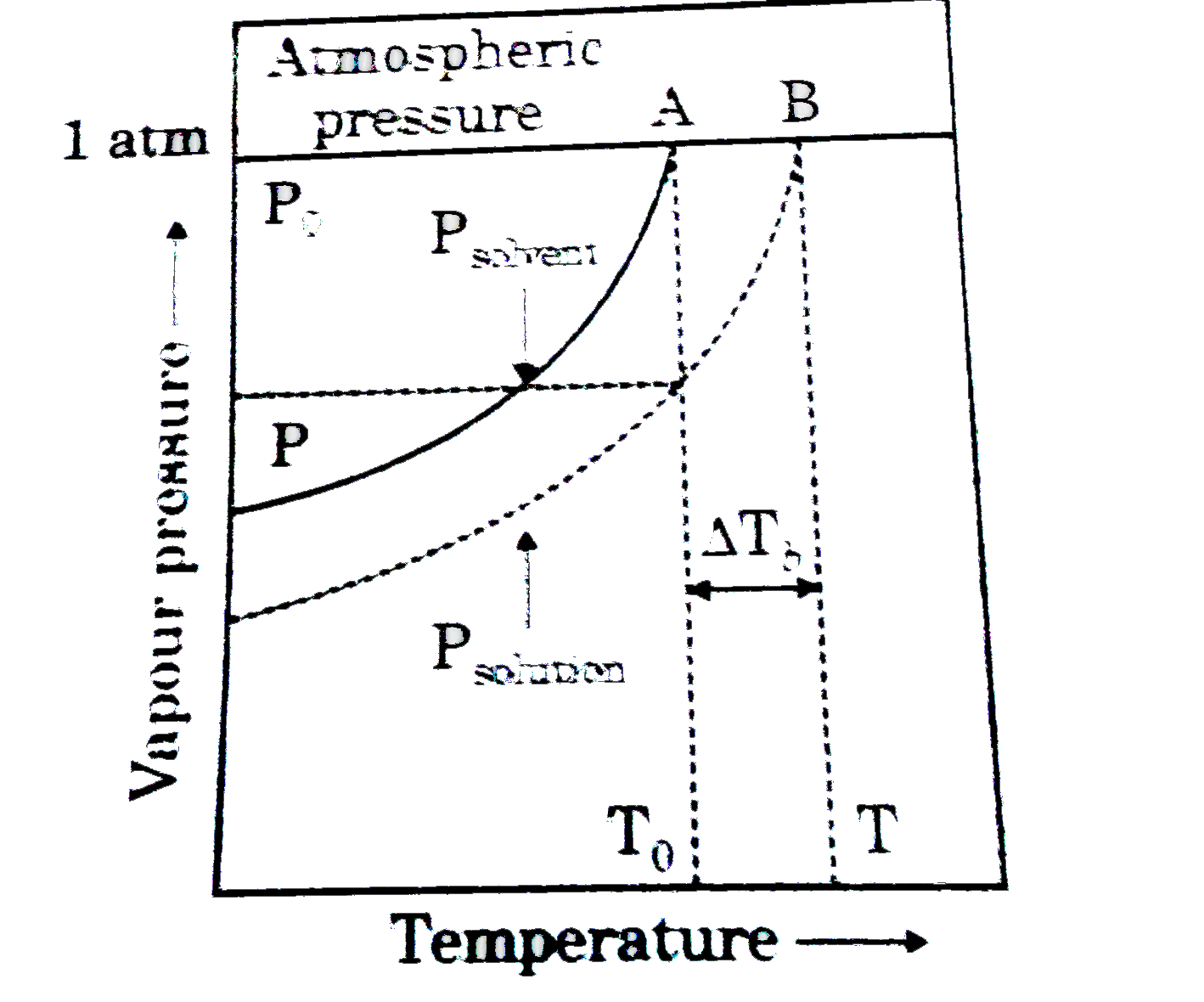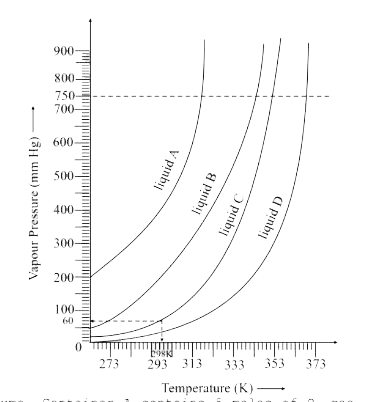Consider following figure and answer the questions at the end of it. Figure explains elevation in boiling point when a non-volatile solute is added to a solvent.

Variation of vapour pressure with temperature and showing elevation in boiling point.
Given that ΔTb is the elevation in boiling point of the solvent in a solution of molality m then Ltm→0(ΔTbm) is equal to
Kb (molal elevation constant)
Ly (latent heat of vaporization)
ΔS (entropy change)
x (mole fraction of solute)
The correct Answer is:A
Step by step video & image solution for Consider following figure and answer the questions at the end of it. Figure explains elevation in boiling point when a non-volatile solute is added to a solvent. Variation of vapour pressure with temperature and showing elevation in boiling point. Given that DeltaT_(b) is the elevation in boiling point of the solvent in a solution of molality m then underset(mto0)(Lt)((DeltaT_(b))/(m)) is equal to by Chemistry experts to help you in doubts & scoring excellent marks in Class 12 exams.
Updated on:21/07/2023Similar Questions
Consider following figure and answer the questions at the end of it. Figure explains elevation in boiling point when a non-volatile solute is added to a solvent.

Variation of vapour pressure with temperature and showing elevation in boiling point.
Elevation in boiling point of an aqueous urea solution is 0.52∘.(Kb=0.52∘mol−1kg). Hence, mole fraction of urea in this solution is:
View SolutionConsider following figure and answer the questions at the end of it. Figure explains elevation in boiling point when a non-volatile solute is added to a solvent.

Variation of vapour pressure with temperature and showing elevation in boiling point.
A complex of iron and cyanide ions is 100% ionized at 1m (molal). If elevation in boiling point is 2.08∘(Kb=0.52∘mol−1kg) then the complex is:
View SolutionFigure explains elevation in boiling point when a non-volatile solute is added to a solvent. Variation of vapour pressure with temperaure and elevation in boiling point is marked.

Elevation in b.p of an aqueous urea solution is 0.52∘(Kb=0.52∘mol−1kg). Hence, mole fraction of urea in this solution is:
View SolutionGiven that ΔTf is the depression in freezing point of the solvent in a solution of a non-volatile solute of molarity m,the quantity Ltm→0(ΔTf/m) is equal to ……………. .
View SolutionWhich solution will show maximum elevation in boiling point?
View SolutionIllustrate elevation in boiling point with the help of vapour pressure-temperature curve of a solution. Show that elevation in boiling point is a colligative property.
View SolutionIf for a sucrose, elevation in boiling point is 1.0∘C, then what will be the boiling point of NaCl solution for same molal concentration?
View SolutionIf the solution boils at a temperature T1 and solvent at a temperature T2 the elevation of boiling point is given by:
View SolutionThe variation of vapour pressure of different liquids with temperature is shown in figure

Calculate graphically boiling points of liquids A and B.
View SolutionThe vapour pressure of pure liquid solvent A is 0.80 atm. When a non-volatile substance B is added to the solvent, its vapour pressure drops to 0.60 atm, the mole fraction of component B in the solution is
View Solution
